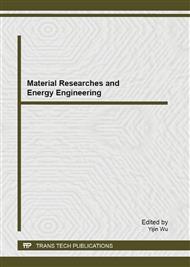p.359
p.365
p.371
p.376
p.380
p.389
p.394
p.399
p.407
Structural Shifting and Electronic Properties of Stone-Wales Defect in Armchair Edge (5,5) Carbon Nanotube
Abstract:
Stone Wales (SW) defect is one type of topological defect on the CNT, in this study we performed first principles calculations of SW defects in armchair edge (5,5) carbon nanotube (CNT) by the density functional theory (DFT). Two different defects were studied such as longitudinal and circumference types. Our calculation results show that a longitudinal SW defect is more stable than circumference SW defect. However barrier energy as parameter to control the SW defect in CNT was studied, in calculation we applied Nudge Elastic Band (NEB) method to find minimum energy path (MEP) and barrier energy for SW defect transitions. The result shows that barrier energy of circumference SW defect is lower than another one. We also found that in the case of circumference SW defect, armchair edge (5,5) CNT become semiconductor with the band gap of 0.0544 eV.
Info:
Periodical:
Pages:
380-385
Citation:
Online since:
September 2013
Authors:
Price:
Сopyright:
© 2013 Trans Tech Publications Ltd. All Rights Reserved
Share:
Citation:


